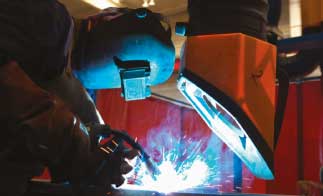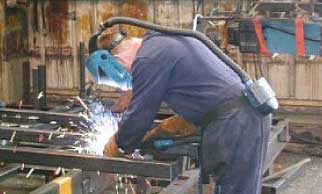Why do workers need protecting?
Welders are exposed to metal fume & gases which can potentially cause lung diseases & lung cancer. Discover the controls needed to prevent these diseases.

Welders are exposed to metal fume & gases which can potentially cause lung diseases & lung cancer. Discover the controls needed to prevent these diseases.
A concise summary of the health hazards arising from welding and how the Breathe Freely campaign aims to address them.
A concise summary of the potential health hazards arising from Welding in the manufacturing industry and what can be done to identify and address them.

Discover the correct Respiratory Protective Equipment (RPE) you should be using in the welding industry.
Air monitoring and measurement may be needed where there is a serious risk to health from the inhalation of welding fume and the likely exposure level of the welders to the fume is not known.
Advice on the design and management of LEV systems to help you control workers’ exposure to welding fume and gases.
Respiratory protective equipment (RPE) may be needed to protect welders from exposure to welding fume and metal.
A prioritised list of control measures to reduce the risk of hazardous exposures in welding.

This toolkit provides information for managers to better recognise the welding hazards and manage and implement the most appropriate controls through an easy to use online tool.
Understand the role of occupational hygienists and how they can help you. Health risk assessments, control measures and training and communication.
Weld Australia has updated their Technical Guidance Note to reduce fume exposures with consideration to the reduced WES values.
Weld Australia has created two excellent free on-line training videos about OHS hazards and risks in welding. Click to access.